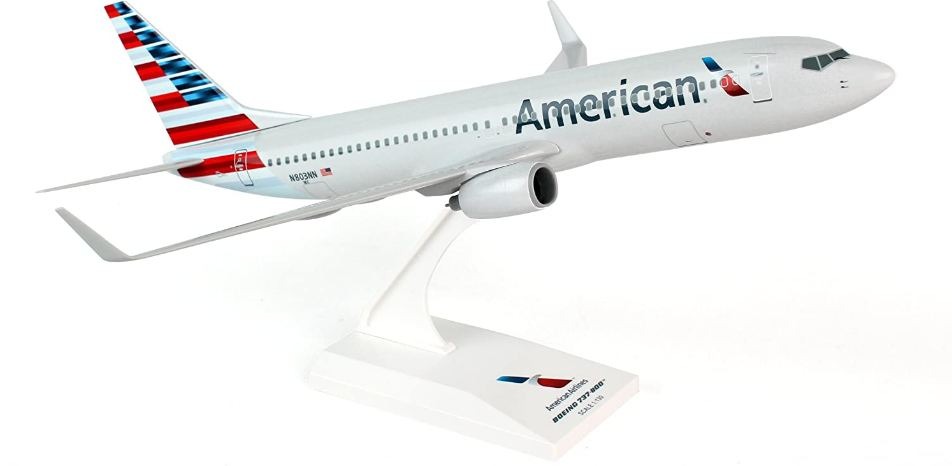Boeing 737 Next Generation, commonly known as 737NG, is an upgraded version of commercial airline Boeing 737 Classic series (-300/-400/-500) manufactured by Boeing Commercial Airplanes. It was first rolled out for flights in 1997, and it is the third derivative of the Boeing 737.
Boeing 737NG was redesigned with wider wings, greater fuel capacity, and higher Maximum Takeoff Weights (MTOW). The series includes four models – the -600/-700/-800/-900. The seating capacity in these models varies between 108 and 215 passengers.
The up-gradation of the Boeing 737 Classic was prompted by the increase in sales of the Airbus A320, which is owned by Boeing Airplane’s competitors. Boeing then updated their slower and shorter-range 737 Classic variants into more efficient models with much higher specifications.
History of the Boeing 737-800
The prototype for Boeing 737-800 was approved on 30 June 1997, and it took its first flight on 31 July 1997. Jim McRoberts and Mike Hewett piloted the airplane. Boeing 737-800 is a narrow-body-shaped aircraft powered by two engines. It is one of the most selling variants of the 737NG, and its model is demanded by many foreign countries as well.
Following are some of the enhancements that Boeing applied to its best-selling aircraft:
- They featured the carbon brakes concept in their 737NG series in July 2008. This change is supposed to replace the steel brakes and reduce the weight package from 550-700 pounds. A weight reduction of 700 pounds resulted in a decrease of 0.5% fuel burn.
- The new Performance Improvement Package (PIP) for 737 was tested by CFM56-7B Evolution nacelle in August 2009. This package aims to improve the fuel burn by 2% on longer stages and reduce the overall drag.
- The Enhanced Short Runway Package is optional in Boeing 737-800. This package is useful for aircraft when taking flights on runways less than 5,000 feet in length. The enhanced package is designed to increase pay or fuel load on such short runways. Landing payloads were increased by up to 8,000 pounds on Boeing 737-800, while for takeoff, the payloads were raised to 2,000 pounds.
Specifications
A regular Boeing 737-800 comes with the following set of specifications:
| Specs | Value |
| Seats (2-class) | 162 |
| Maximum Seats | 189 |
| Length | 39.5 m (129 ft. 6 in) |
| Wingspan | 35.8 m (117 ft. 5 in) |
| Height | 12.5 m (41 ft. 3 in) |
| Engine | CFM-56 |
Sales
By the mid of 2018, the value of a new Boeing 737-800 had fallen from $48.3 million to below $47 million. Today, the value of a new 737-800 aircraft is $89.2 million and is considered the world’s most famous aircraft.
As of May 2019, Boeing has sold 4,979 737-800 aircraft and has 12 unfilled orders with pending status. Ryanair, an Irish airline, is the largest operator of Boeing 737-800 with over 400 aircraft in its ownership.
Structural Problems
In 2005, Boeing’s ex-employees filed lawsuits against the company for having faulty yet operational aircraft. A thorough investigation was held, but nothing could be proven. Al-Jazeera released a documentary in 2010 that made connections of three famous aircraft crashes – Turkish Airlines Flight 1951, American Airlines Flight 331, and AIRES Flight 8250 – with manufacturing faults. However, none of the detailed investigations concluded anything of such matter.
During a routine inspection of one of the 737NG aircraft, several fatigue cracks were found on the fuselage that was initially designed to last a lifetime of 90,000 flights. After this, Boeing changed its inspection policy. It was then established that aircraft with more than 33,000 flights must be checked once every week, while those over 22,600 flights must be inspected once a year.
Crashes and Fatalities
Unfortunately, there are a number of fatal accidents involving Boeing 737-800. Most of them resulted in hundreds of deaths, including passengers and crew:
29 September 2006
A Brazilian airline operating a brand new 737-800 carried 154 passengers crashed after breaking up midair and colliding with an Embraer Legacy 600. There were no survivors.
25 February 2009
Turkish Airlines flight 1951 coming from Istanbul crashed in Polderbaan in an attempt to land at Amsterdam’s airport. There were nine casualties.
22 May 2010
Air India Express Flight 812 overran the Mangalore International Airport runway on 22 May 2010. 158 passengers and six crew members died. There were only eight survivors.
19 March 2016
Flydubai Flight 981, flying from Dubai to Russia, crashed just before landing at the destination airport. All 62 people who were on board died.
8 January 2020
Ukraine International Airline Flight 752, operating a 737-800, crashed right after taking off from Imam Khomeini International Airport in Tehran bound for Kyiv, Ukraine. All 167 passengers and 9 crew members died.
7 August 2020
Air India Express Flight 1344 crashed on the runway of Calicut International Airport during landing in heavy rain. Both pilots and 18 passengers died.
Boeing 737-800 – The Aircraft That Changed History
Although the 737Max variant now supersedes 737NG, the Boeing 737-800 will always remain one of the most famous aircraft in aviation history. Nothing lasts forever, and there are faults in everything; 737-800 is still considered among the best commercial airliners that ever flew.
